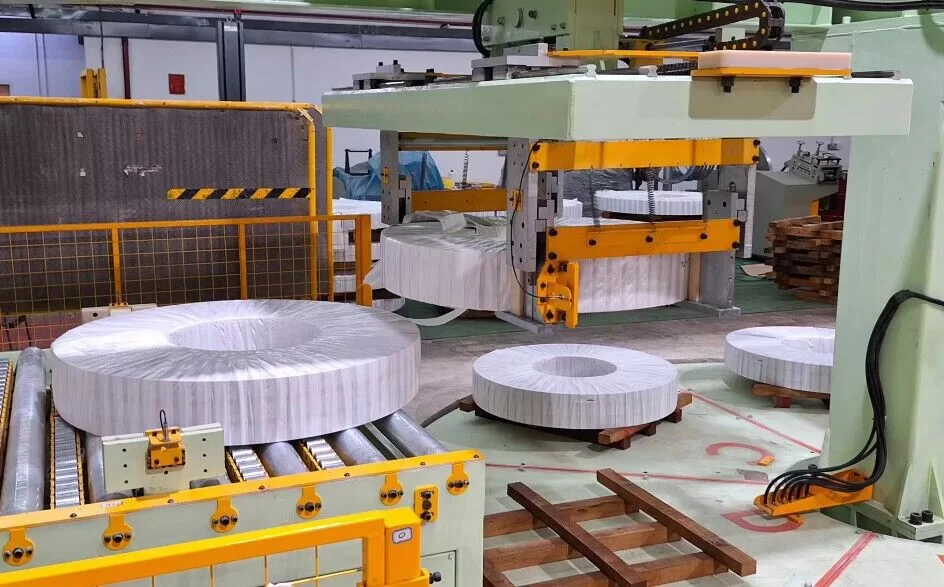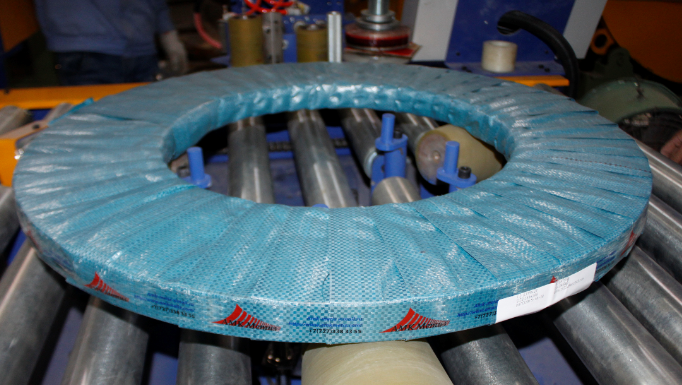How to Avoid Common Damages and Defects in Steel Coil Packaging
Steel coil packaging is a critical step in the steel supply chain, safeguarding valuable assets used across construction, automotive, and manufacturing sectors. Effective packaging ensures steel coils arrive at their destination free from damage, maintaining material integrity during transport and storage. However, the inherent weight, size, and susceptibility of steel coils mean that inadequate packaging can lead to costly damages and defects, impacting product quality, operational efficiency, and potentially customer relationships.
This guide explores practical strategies to prevent the most common issues encountered in steel coil packaging. We will cover industry best practices, appropriate material selection, safe handling procedures, and the role of automation, supported by relevant standards and insights into emerging trends.
1. The Importance of Proper Steel Coil Packaging
Steel coils are vulnerable to various forms of harm, including physical damage, moisture ingress, and environmental factors. Robust packaging is essential to preserve their condition, ensure usability in downstream processes, and minimize financial losses. Common types of damage include:
- Surface Scratches and Abrasions: Affecting appearance and potentially compromising coating integrity.
- Corrosion and Rust: Degrading the metal, especially problematic in humid conditions or during sea freight.
- Deformation and Bending: Including issues like telescoping, edge wave, or dents, rendering the coil unusable for precision applications.
- Edge Damage: Crushed or bent edges caused by improper handling or strapping.
Each form of damage not only represents material loss but can also lead to production delays, increased processing costs, and damage to a supplier's reputation.

2. Common Packaging Defects and Their Causes
Understanding the root causes of packaging failures is key to preventing them. Common defects often stem from:
- Improper Strapping Tension: Straps that are too loose allow coils to shift, leading to impact damage or deformation. Conversely, excessive tension can cause edge damage or localized pressure points.
- Inadequate Moisture Protection: Insufficient barriers against humidity or water ingress result in corrosion and rust formation, particularly on coil surfaces and edges.
- Incorrect Stacking or Support: Stacking coils improperly (e.g., pyramid stacking without adequate support) or overloading pallets creates uneven pressure distribution, potentially damaging lower coils or causing stack instability.
- Insufficient Edge Protection: Lack of robust edge protectors makes coils vulnerable to dents, cracks, or crushing during handling, lifting (especially with forks), and transport.
- Poor Material Selection: Using packaging materials that are not suited to the coil's weight, dimensions, or the transport environment (e.g., insufficient VCI protection for sea freight).
3. Key Industry Standards for Steel Coil Packaging
Adhering to established industry standards provides a framework for safe and effective steel coil packaging. Key standards include:
- ASTM A700 - Standard Practices for Packaging, Marking, and Loading Methods for Steel Products for Shipment: This widely recognized standard details methods for packaging various steel products, including coils, covering aspects like wrapping materials, strapping, identification marking, and loading configurations for truck, rail, and ocean transport. Learn more about ASTM standards.
- ISO Standards (e.g., ISO 9001): While not specific to packaging, quality management systems like ISO 9001 help ensure processes are consistent, documented, and continuously improved, contributing to reliable packaging outcomes.
- Specific Customer Requirements: Often, large buyers or industry sectors (like automotive) have detailed packaging specifications that must be met.
Compliance with relevant standards helps minimize transport risks, ensures product quality, and facilitates smoother logistics operations.
4. Selecting the Right Packaging Materials
Choosing appropriate packaging materials is fundamental to protecting steel coils from damage. Essential materials include:

- VCI (Volatile Corrosion Inhibitor) Paper/Film: Essential for preventing corrosion. VCI materials release invisible, harmless vapors that form a protective layer on the metal surface, effective during storage and long transit times, especially in humid environments. Available as paper wraps, films, or integrated into polywoven materials.
- Stretch Film (Polyethylene - PE): Provides a tight, conforming wrap that protects against dust, dirt, minor abrasions, and scratches. It helps secure other packaging layers and contributes to load stability. Ensure sufficient film thickness and overlap for heavier coils.
- Outer Wraps (e.g., Polywoven Fabric, HDPE): Offer enhanced puncture resistance and durability compared to stretch film alone, providing robust protection against physical impacts and weather during outdoor storage or transit.
- Edge Protectors: Made from heavy-duty cardboard, plastic, or metal, these are crucial for protecting coil edges from strapping damage and impacts during handling. They distribute pressure more evenly.
- Desiccants: Absorb moisture trapped within the package, providing an additional layer of defense against corrosion, particularly useful for sensitive steel grades or long-term storage. Placement should ensure they don't directly contact the steel surface.
- Skids/Pallets: Provide a stable base for handling and storage, keeping coils off the ground and facilitating movement by forklift or crane. Must be appropriately sized and rated for the coil weight.
5. Best Practices for Handling and Moving Steel Coils
Improper handling is a major cause of coil damage. Implementing safe and careful procedures is vital:
- Use Appropriate Lifting Equipment: Employ cranes with C-hooks, coil lifters, or forklifts equipped with specialized coil rams (probes) designed for the coil's size and weight. Avoid lifting with standard forks directly under the coil body unless proper cradling or protection is used. Ensure equipment capacity is never exceeded.
- Avoid Ground Contact and Impacts: Never roll coils directly on the ground. Use pallets, skids, or protective dunnage (e.g., rubber mats, wooden saddles) during staging and transport. Operate lifting equipment smoothly, avoiding sudden starts, stops, or sharp turns that can cause shifting or impact.
- Operator Training: Ensure all personnel involved in handling steel coils receive thorough training on safe lifting techniques, equipment operation, and awareness of potential hazards. Regular refresher training and safety audits are recommended. [See OSHA guidelines for material handling].
- Secure Transport Loads: Properly block and brace coils within trucks or containers according to ASTM A700 or other relevant guidelines to prevent shifting during transit.
Real-World Example: A steel service center reduced edge damage incidents by 15% after investing in specialized coil handling attachments for their forklifts and implementing a mandatory operator retraining program focusing on smooth maneuvering and proper load securing.
6. How to Prevent Corrosion and Moisture Damage
Corrosion remains a persistent threat, especially during extended storage or shipment through varying climates. Prevention strategies include:
- Effective VCI Application: Ensure complete coverage with VCI paper or film, creating a sealed micro-environment. Select the VCI type appropriate for the metal and expected duration/conditions of protection. Follow manufacturer guidelines for application.
- Proper Sealing: Tightly seal the packaging using stretch film, shrink wrap, or durable outer wraps with secure closures (e.g., heat sealing, taping) to prevent moisture ingress. Pay special attention to seams and overlaps.
- Use of Desiccants: Strategically place desiccant packs inside the sealed package (but not in direct contact with steel) to absorb residual moisture, particularly for sensitive products or high-humidity routes.
- Controlled Storage Environment: Whenever possible, store packaged coils in clean, dry, indoor environments with stable temperatures to minimize condensation risks. Avoid storing directly on concrete floors.
Case Study Insight: A European steel exporter significantly reduced rust claims on coils shipped to Asia by switching to a high-performance VCI film combined with strategically placed desiccants and ensuring meticulous sealing procedures, achieving a near-zero corrosion rate during transit.
7. Proper Stacking and Storage Techniques
Safe and effective stacking and storage are crucial to prevent deformation and ensure efficient use of space:
- Use Appropriate Racking or Dunnage: Store coils in custom-designed racks or cradles (saddles) made of wood or rubber-lined steel. These provide even support and prevent flattening or damage to the coil's shape. For floor storage, use sturdy pallets or timber dunnage.
- Adhere to Safe Stack Heights: Follow manufacturer recommendations and industry standards (like ASTM A700) regarding maximum stacking heights based on coil weight, dimensions, and packaging type. Overstacking can crush lower coils.
- Stable Stacking Configurations: Eye-to-the-sky (vertical axis) storage is common, but ensure stability. Pyramid stacking requires careful planning and adequate support to prevent collapse. Never stack directly on top of unprotected coils.
- Maintain Clear Aisles and Proper Spacing: Ensure sufficient space between stacks for safe handling equipment access and to prevent accidental contact.
8. Automating Steel Coil Packaging for Consistency
Manual packaging processes can introduce variability, leading to inconsistent protection and potential defects. Automation offers significant advantages:

- Consistent Material Application: Automated wrapping machines apply stretch film or VCI materials with precise overlap and tension, ensuring uniform coverage.
- Precise Strapping: Automated strapping systems apply straps at programmed locations with consistent tension, avoiding damage from over-tightening or instability from loose straps.
- Reduced Human Error: Automation minimizes manual handling errors that can lead to drops, impacts, or incorrect material application. Automated coil packign systems enhance repeatability and reliability.
- Increased Throughput: Automated lines can often package coils faster and more efficiently than manual methods.
Industry 4.0 Integration: Advanced systems may incorporate sensors and data logging to monitor packaging parameters (e.g., film usage, strap tension) in real-time, enabling process optimization and quality assurance.
9. Regular Quality Control Inspections
Implementing robust quality control (QC) checks throughout the packaging process is essential for verifying effectiveness and catching potential issues early:
- Material Inspection: Check incoming packaging materials (VCI, film, edge protectors) for defects or damage before use.
- In-Process Checks: Monitor automated systems and observe manual processes to ensure correct procedures are followed (e.g., proper VCI placement, sufficient film layers, correct strap tension). Use tools like tension gauges where applicable.
- Final Package Inspection: Conduct visual inspections of completed packages for signs of damage, loose wrapping, improperly applied straps, or inadequate marking/labeling.
- Moisture Monitoring: For critical shipments, consider using humidity indicator cards placed inside the packaging to verify the effectiveness of moisture control measures upon arrival.
- Documentation and Feedback: Keep records of QC checks and any identified issues. Use this data to refine processes and provide feedback for continuous improvement.
10. Future Trends in Steel Coil Packaging
The steel coil packaging landscape is evolving, driven by efficiency, sustainability, and technological advancements:
- Sustainable Packaging Materials: Growing demand for eco-friendly options, including biodegradable or recycled-content films and papers, and reusable packaging components.
- Smart Packaging: Integration of IoT sensors within packaging to monitor conditions like temperature, humidity, shock, and tilt during transit, providing real-time data for proactive damage prevention and supply chain visibility.
- Advanced Automation and Robotics: Increased use of robotics for complex handling tasks and AI-driven systems for optimizing packaging parameters based on coil specifications and shipping routes.
- Enhanced Protective Coatings: Development of more durable and environmentally friendly temporary coatings applied directly to the steel surface as an alternative or supplement to traditional packaging.
Conclusion: Protecting Your Steel Coils with Best Practices
Preventing common damages and defects in steel coil packaging relies on a comprehensive strategy encompassing careful material selection, adherence to industry standards (like ASTM A700), meticulous handling and storage procedures, and effective corrosion prevention. Embracing automation and implementing rigorous quality control further enhance consistency and minimize risks.
Investing in high-quality packaging materials, proper equipment, thorough training, and potentially automated solutions is not just a cost center—it's an investment in protecting product value, maintaining operational efficiency, satisfying customers, and ultimately safeguarding your bottom line. By staying informed about best practices and emerging trends, businesses can ensure their steel coils arrive safely and in optimal condition, every time.